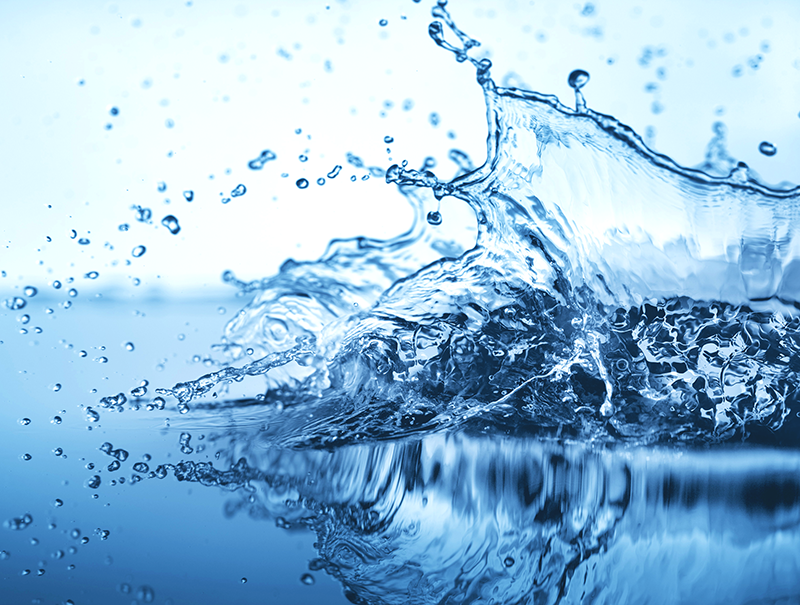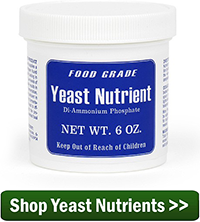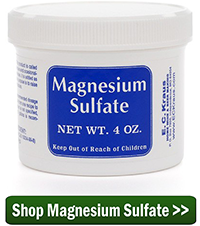 I just started my first batch of home made wine. I didn’t use my tap water because it’s salt water from water softener. I used distilled water in this wine, instead. After coming to your site I found out that it’s not good to use distilled water in wine making. Is there anything I can do to save my homemade wine? Or would I be better of starting over?
I just started my first batch of home made wine. I didn’t use my tap water because it’s salt water from water softener. I used distilled water in this wine, instead. After coming to your site I found out that it’s not good to use distilled water in wine making. Is there anything I can do to save my homemade wine? Or would I be better of starting over?
Name: Rory
State: Michigan
—–
Hello Rory,
Let me start off by saying that using distilled water in a wine does not mean the wine is ruined. We do not recommend using distilled water because it may cause problems with the fermentation.
Distilled water is water that has been ran through a still, or rather, steamed from one vessel to the next. This process drives out all the free oxygen and leaves the trace minerals behind. This is significant to a fermentation.
The one thing that wine yeast needs is oxygen, particularly in the first stages of the fermentation. Oxygen is what helps wine yeast to multiply into a larger colony. Without a larger colony, you will have a sluggish, drawn-out fermentation.
The little packet of wine yeast that is typically added to a fermentation needs to multiply itself between 100 to 150 times to sustain a vigorous fermentation. Most of the sediment you will see at the bottom of the fermenter are all these yeast cells that were created during the fermentation.
If you’ve used distilled water in your wine, we recommend adding yeast nutrient, if you haven’t done so already. Yeast nutrient is a singular form of nitrogen – diammonium phosphate. The recommended dosage for this is 1 teaspoon per gallon of wine. This yeast nutrient will work in place of free oxygen to help start the wine yeast to multiply successfully.
In rare and extreme cases, it may also be necessary for you to aerate the wine. This can be done by splashing the wine to allow air to saturate into the wine must, or you can siphon the wine must from one vessel to the next, holding the siphon hose back so the the wine splashes.
Minerals make up part of the nutritional meal that wine yeast need to ferment sugar into alcohol. Minerals are needed for yeast to metabolize these sugars freely. Without minerals, wine yeast have a difficult time consuming the sugar that is right in front of them. For this reason, if you use distilled water in your wine making we recommend adding a little magnesium sulfate to your wine — 1/2 teaspoon per 5 gallons is more than enough.
I would like to mention again that using distilled water in your wine making does not mean you have ruined your wine, but what it does mean is that you need to take some simple actions to mitigate the effects of the distilled water. By adding yeast nutrient and magnesium sulfate you can go on to have a great tasting wine.
Happy Winemaking,
Ed Kraus
—–
Ed Kraus is a 3rd generation home brewer/winemaker and has been an owner of E. C. Kraus since 1999. He has been helping individuals make better wine and beer for over 25 years.

Yes, ‘aerated water’ is necessary for yeast fermentation. However, after fermentation, aeration of the wine is not recommended as this may lead, in time, to oxygenation which will usually spoil the wine (sherries excluded). When making scratch wines, any water added to the wine afterfermentation, as in the case of bentonite hydration and later acid or alcohol adjustments, SHOULD be distilled in order that the potential for oxidation of your wine be minimized.
Regarding Chlorine in tap water, it isn’t a problem if you leave the water resting overnight. Chlorine will dissipate into the air, and the water’ll be Chlorine free. You’re right about Fluorine, though. As there isn’t an easy method to eliminate it. I wonder if using r. o. water (reverse osmosis) will be a better option than distilled water. Any one?
Joaquin
Chlorine will evaporate out of water overnight which is why water companies are switching to chloramines which take several weeks to evaporate out.
Aquarium keepers use sodium thiosulfate to control both chlorine and chloramines.
UV light, chloramine-rated filters, potassium metabisulfite, and ascorbic acid in addition to sodium thiosulfate are able to remove chloramines.
Check your local water company’s water quality report to see if they chlorinate or chloraminate your tap water.
In the past, I have used "spring water" sold in grocery stores in lieu of my tap H2O. I think this type of water retains most of the minerals that Ed spoke of. I also always use the Yeast Nutrient from E.C. Kraus in every batch – excellent results.
I use distilled water when i rack off my wines into clean carboys.
Your comment that distilling takes the oxygen out of water blew me away. Water is 2 parts hydrogen and 1 part oxygen H2O. Therefore if you take all of the oxygen out, you are left with pure hydrogen…Better check on your information!
The comment states that distilling takes out the “free oxygen”. This is different than the oxygen bound to the hydrogen.
Distilling takes the free oxygen out of the water, meaning the oxygen that is suspended in the water. He is not talking about the oxygen that make up the water itself. That oxygen is not used by the yeast.
Actually you’re right but wrong. The oxygen you’ve referred to is bound oxygen and Ed is referring to dissolved oxygen. Two different concepts. I too partly disagree with Ed’s logic on displaced oxygen. The reason Ed gives for the distilled water being lower in DO is because it is prepared by raising the water to its boiling point thus creating steam. The solubility of oxygen is proportional to the temperature of the water. The steam is then condensed to form back into water. Remember the three states of matter are solid, liquid, and gas. Youre just taking the water molecule back to its liquid state. This is usually done in a limits oxygen atmosphere so the amount of DO is limited until the water comes in contact with oxygen again i.e. air. To make a long story a little shorter……just thoroughly mix your distilled water in the presence of ample air and the DO will be back to a saturation level. There are some issues as to the waters saturation point with the reduced mineral content but that another matter in itself. Way too deep for wine making. As stated earlier, the solubility of oxygen is inversely proportional to its temperature so if you need increased DO then drop the temperature and agitate the water. Now the reduced minerals in the water is another issue as far as flavor and fermentation.
The chlorine and Florine in tap water would seem to be a bigger concern than the DO content in distilled water. I’ll yield that question back to Ed.
Sometimes “a little knowledge is dangerous.”
I have used bottled water from store for my wine kits, and have not had any problems, our City has too many chemicals in it, for good drinking water you have to put in a pitcher, and leave it sit for a while to be good drinking, I have made two wine kits so far and its worked out. ok
Rory,
Water from a water softener does not have salt in it. The salt is used to recharge the softener unit with negative ions and is washed out. That said, the ionization process can remove many minerals. Go with 5 gal. Spring water unless you have a friend who has good tasting well water. The latter is what I’ve been using for the last 10 years for over forty 10-25 gal. batches with good results.
Michael, you beat me to it my trade was Heating, Air Conditioning and Plumbing and you are absolutely right. The salt is used with the resin to create a Ion Exchange as hard water passes thru the bed the resin gives up an Ion in exchange for minerals like Limestone. And the salt never makes its way to your glass of water. Give that man Cigar!
I live in North Carolina. Can you tell me what permits I would need to make and sell wines? Also how much the permits would cost? I tried contacting the ABC Board in Raleigh NC but no response. I want to make about 600 gallons a year and sell to local vendors in the area.
I live in NC, too, and am also interested in selling my homemade wine. Here is what I found:
There are several types of permits. https://abc.nc.gov/Permit/CommercialTypes
I think the one you and I are interested in is this one:
Authorization of unfortified winery permit. Fee: $300.00 Form (18B-1101)
The holder of an unfortified winery permit may:
Manufacture unfortified wine;
Sell, deliver and ship unfortified wine in closed containers to wholesalers licensed under this Chapter as authorized by the ABC laws, except that wine may be sold to exporters and nonresident wholesalers only when the purchase is not for resale in this State;
Ship its wine in closed containers to individual purchasers inside and outside this State;
Furnish or sell “short-filled” packages, on which State taxes have been or will be paid, to its employees for the use of the employees or their families and guests in this State;
Regardless of the results of any local wine election, sell the winery‘s wine at the winery for on- or off-premise consumption upon obtaining the appropriate permit under G.S. 18B-1001.
First time wine maker here. I use Japaness plums and everything seems to have gone great..but I moved the wine from one carboy to another after the yeast dropped out. I tasted it to see what it might taste like at that point. It was bitter. Is there anything I can do to save the wine?
its usually a bit bitter when its new, it doesnt mean it wont taste better later.
Distilling does not remove all the oxygen from water , if it did you would only have hydrogen left. "Chemical formula H 2 O, one oxygen and two hydrogen atoms connected by covalent bonds". I believe your talking about Aerated water, which is, correctly speaking, distilled water to which purified air is added to improve its flavor. If you use distilled water just put it in an non-pressurized container ,that has air in it and agitate the liquid. Same reason you have an air pump in a fish tank because fish do not breathe water, its the air bubbles suspended in water.
Harry, I just wanted to point out that most bottled water you see for sale is not distilled. It is okay to use those. It is the "distilled" water, specifically, that should not be used.
Richard, I do not have the specifics you are looking for, other than to say expect a costly Bond to be involved. I would urge you to be persistent in contacting the ABC of your state, but the bigger hurdle will be on a Federal level. Below are a couple of links that my help:
http://abc.nc.gov/PERMITS/
http://law.justia.com/cfr/title27/27-1.0.1.1.1.html
Carl, exposing the wine to oxygen is not a good solution to your problem, the potential for oxidation is too high. You best solution is to purchase an actual wine carafe and decant the wine into that before serving.
Warren, see response to Bob, above.
I think this paranoia about distilled water is bogus. When you add distilled water you know you are getting pure, 100% water molecules. No minerals or contaminants the might harm fermentation or cause off flavors. Of course the wine fermentation needs oxygen and nutrients. Just mixing up the kit should add enough oxygen. A good kit should come with the nutrients that the fermentation needs. If not the wine maker can add a little along the way (i.e. Fermaid). Years ago when I switched from tap water to distilled water in kits (and any wine where water was added) the quality of the finished product jumped way up.
Hello Bob, what is being referred to in the post is the "free oxygen" in the water, not the oxygen molecules that are bound to the water itself. The bound oxygen is still in the water, but does the yeast no good, because it is not available to the yeast. Free oxygen is basically referring to the air that is saturated into the water. I hope this clear things up.
Is there a filter that will take chlorine out of the water? (As in a whole house filter that we could use in our small commercial winery.)
We have recently connected to our county water system. Before that we were on a deep well. After certain issues with the well we switched.
Judy, I am sure that there are water filters that will remove chlorine but they will probably also remove the free oxygen and minerals needed for a successful fermentation. Really all you need to do to get the chlorine down to an acceptable level is to let the water stand overnight so the chlorine can dissipate.
Can I Use Tap Water
http://www.eckraus.com/blog/can-i-use-tap-water-to-make-wine-kit
Ron, it is important to understand that it is normal for a wine to taste bitter at this stage. What you will discover is that time will change the flavor of the wine incredibly. I would urge you to do nothing about the flavor until it has had time to bulk age for a while.
About 6 months ago I bottled a batch of pinot noir and I guess I added sulfites twice and now I can taste the sulfites. I have tried letting it breath for a few minutes but that does not work. Can I uncork and expose to some oxygen?
to Michael and Eddie, regarding ion exchange of water softeners–
I have grown the grape variety Favorite in n. Texas, which can produce high-acid-high-pH juice. This problem can be overcome by blending, but requires ion exchange to correct the juice if wanting a 100% varietal.
Have either of you tried using a water softener for making adjustments to the must prior to fermentation?
How is (RO) reverse osmosis play this out is it the same as distilled H20?
Frank, we do not recommend using reverse osmosis water for wine making either. While the free oxygen does remain in the water through the osmosis filtering process, critical minerals are still being removed. For more information, please see the article link below
Reverse Osmosis Water
http://blog.eckraus.com/reverse-osmosis-water-for-wine-making
Added yeast 24 hours ago to a blackberry wine I started, 2 1/2 gallons. I used distilled water. SG was at 1.090 before adding yeast. I did add yeast nutrient per recipe, 1tsp per gallon before adding yeast. What should I do now about the distilled water. Do I add magnesium sulphate now or wait to see what happens. I did aerate the wine today not sure about adding magnesium and additional nutrient. After 24 hrs of fermenting I do see some activity, but not a lot.
David, I would still add the appropriate dose of magnesium sulfate to assure a successful fermentation.
I’ve read your response to the dissolved oxygen question. You offer DAP as a way to provide the free oxygen needed for the yeast. I question this since the DAP should be only providing food in the form of nitrogen and some phosphate. My question is rather it wouldn’t be an option to add some hydrogen peroxide at this point. The peroxide will disassociate a free oxygen molecule and should provide the needed oxygen during fermentation. I’m sure you know peroxide is just a supersaturated water molecule H2O2 with the additional oxygen loosely bound. The peroxide will easily break down in the mix to H2O + O. Just a thought
Rock, first let me clarify that adding yeast nutrient does not add oxygen. It adds nitrogen that that will work in place of free oxygen to help the yeast to multiply. As far as using hydrogen peroxide, the problem is getting food-grade hydrogen peroxide. What you will find at your local store has stabilizers added to keep it stable while on the shelf. If you find one without stabilizers, because there is not stabilizer it will want to turn to water therefore not providing the needed oxygen. The nitrogen provided by yeast nutrient is just as beneficial as the oxygen.
Soft water is NOT salt water. When you drink it do you taste salt? The salt you put in your softener is used to clean the beads that remove the hardness from your water, then it’s flushed out. I use soft water in my wine making and have since 2005, I just let it sit in gallon containers with the caps off for 24 hours to get rid of the chlorine. I have tried bottled water, natural spring water, soft water, it all makes great wine from these kits. I have never tried distilled water though, I think removing all the minerals also removes taste.